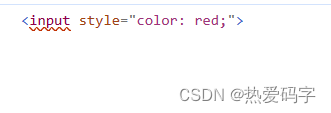一、Swiper
html :
注意: class=“swiper-wrapper”、class=“swiper-slide” 等类名不能写错
<body><!-- 导入下载好的包或通过 CDN 导入vue、swiper.js、swiper.css --><!-- <script src="https://unpkg.com/vue@3/dist/vue.global.js"></script> --><!-- <script src="https://unpkg.com/swiper@8/swiper-bundle.min.js"></script> --><!-- <link rel="stylesheet" href="https://unpkg.com/swiper@8/swiper-bundle.min.css"/> --><script src="./lib/vue.global.js"></script><script src="./lib/swiper-bundle.min.js"></script><link rel="stylesheet" href="./lib/swiper-bundle.min.css" /><script type="module" src="./js/17.swiper轮播.js"></script><div id="app"><div class="swiper-container"><div class="swiper-wrapper"><div class="swiper-slide" v-for="data in dataList">{{ data }}</div></div><!-- 分页器 --><div class="swiper-pagination"></div><!-- 导航按钮 --><div class="swiper-button-prev"></div><div class="swiper-button-next"></div><!-- 滚动条 --><div class="swiper-scrollbar"></div></div></div></body>
js:
const app = Vue.createApp({data () {return {dataList: []}},mounted () {this.dataList = ['1111', '2222', '3333', '444']},updated () {var mySwiper = new Swiper('.swiper-container', {loop: true, //无限循环// direction: 'vertical', // 垂直切换选项autoplay: true, //自动切换keyboard: true, //键盘控制zoom: true, //调焦,开启缩放功能pagination: { el: '.swiper-pagination' }, //分页器navigation: {prevEl: '.swiper-button-prev',nextEl: '.swiper-button-next'}, //前进后退按钮scrollbar: {el: '.swiper-scrollbar'} //滚动条})}
}).mount('#app')二、自定义指令
在 < script setup > 中,任何以 v 开头的驼峰式命名的变量都可以被用作一个自定义指令。在下面的例子中,vFocus 即可以在模板中以 v-focus 的形式使用。
<script setup>
// 在模板中启用 v-focus
const vFocus = {mounted: (el) => el.focus()
}
</script><template><input v-focus />
</template>
在没有使用 < script setup > 的情况下,自定义指令需要通过 directives 选项注册:
export default {setup() {/*...*/},directives: {// 在模板中启用 v-focusfocus: {/* ... */}}
}
1、指令钩子
const myDirective = {// 在绑定元素的 attribute 前// 或事件监听器应用前调用created(el, binding, vnode, prevVnode) {// 下面会介绍各个参数的细节},// 在元素被插入到 DOM 前调用beforeMount(el, binding, vnode, prevVnode) {},// 在绑定元素的父组件// 及他自己的所有子节点都挂载完成后调用mounted(el, binding, vnode, prevVnode) {},// 绑定元素的父组件更新前调用beforeUpdate(el, binding, vnode, prevVnode) {},// 在绑定元素的父组件// 及他自己的所有子节点都更新后调用updated(el, binding, vnode, prevVnode) {},// 绑定元素的父组件卸载前调用beforeUnmount(el, binding, vnode, prevVnode) {},// 绑定元素的父组件卸载后调用unmounted(el, binding, vnode, prevVnode) {}
}
2、钩子参数
指令的钩子会传递以下几种参数:
- el:指令绑定到的元素。这可以用于直接操作 DOM。
- binding:一个对象,包含以下属性。
- value:传递给指令的值。例如在 v-my-directive=“1 + 1” 中,值是 2。
- oldValue:之前的值,仅在 beforeUpdate 和 updated 中可用。无论值是否更改,它都可用。
- arg:传递给指令的参数 (如果有的话)。例如在 v-my-directive:foo 中,参数是 “foo”。
- modifiers:一个包含修饰符的对象 (如果有的话)。例如在 v-my-directive.foo.bar 中,修饰符对象是 { foo: true, bar: true }。
- instance:使用该指令的组件实例。
- dir:指令的定义对象。
- vnode:代表绑定元素的底层 VNode。
- prevNode:代表之前的渲染中指令所绑定元素的 VNode。仅在 beforeUpdate 和 updated 钩子中可用。
举例说明:
<div id="app"><input v-mycolor:tt.test="'red'" />
</div>
const app = Vue.createApp({})
//传递的参数可以根据需要指定,也可以不传
app.directive('mycolor', (el, binding, vnode, prevVnode) => {el.style.color = binding.value//console.log(el)console.log(binding)
})//调用指令钩子
app.directive('mytest', {mounted (el, binding, vnode, prevVnode) {console.log(el)},updated (el, binding) {console.log(binding)}}).mount('#app')A、el 的输出结果 :与 < input v-mycolor:tt.test=“‘red’” /> 做对比

-------------------------------------------------------------分割线----------------------------------------------------
B、binding 的输出结果 :与 < input v-mycolor:tt.test=“‘red’” /> 做对比

3、对象字面量
支持对象传递
<div v-demo="{ color: 'white', text: 'hello!' }"></div>
app.directive('demo', (el, binding) => {console.log(binding.value.color) // => "white"console.log(binding.value.text) // => "hello!"
})

)

![[情商-2]:理解情商最关注的要素 - 情绪,情绪,情绪,不是事情本身,不是逻辑推理,不是讲道理](http://pic.xiahunao.cn/[情商-2]:理解情商最关注的要素 - 情绪,情绪,情绪,不是事情本身,不是逻辑推理,不是讲道理)






![[C#]使用ONNXRuntime部署一种用于边缘检测的轻量级密集卷积神经网络LDC](http://pic.xiahunao.cn/[C#]使用ONNXRuntime部署一种用于边缘检测的轻量级密集卷积神经网络LDC)




基础理论)


)
